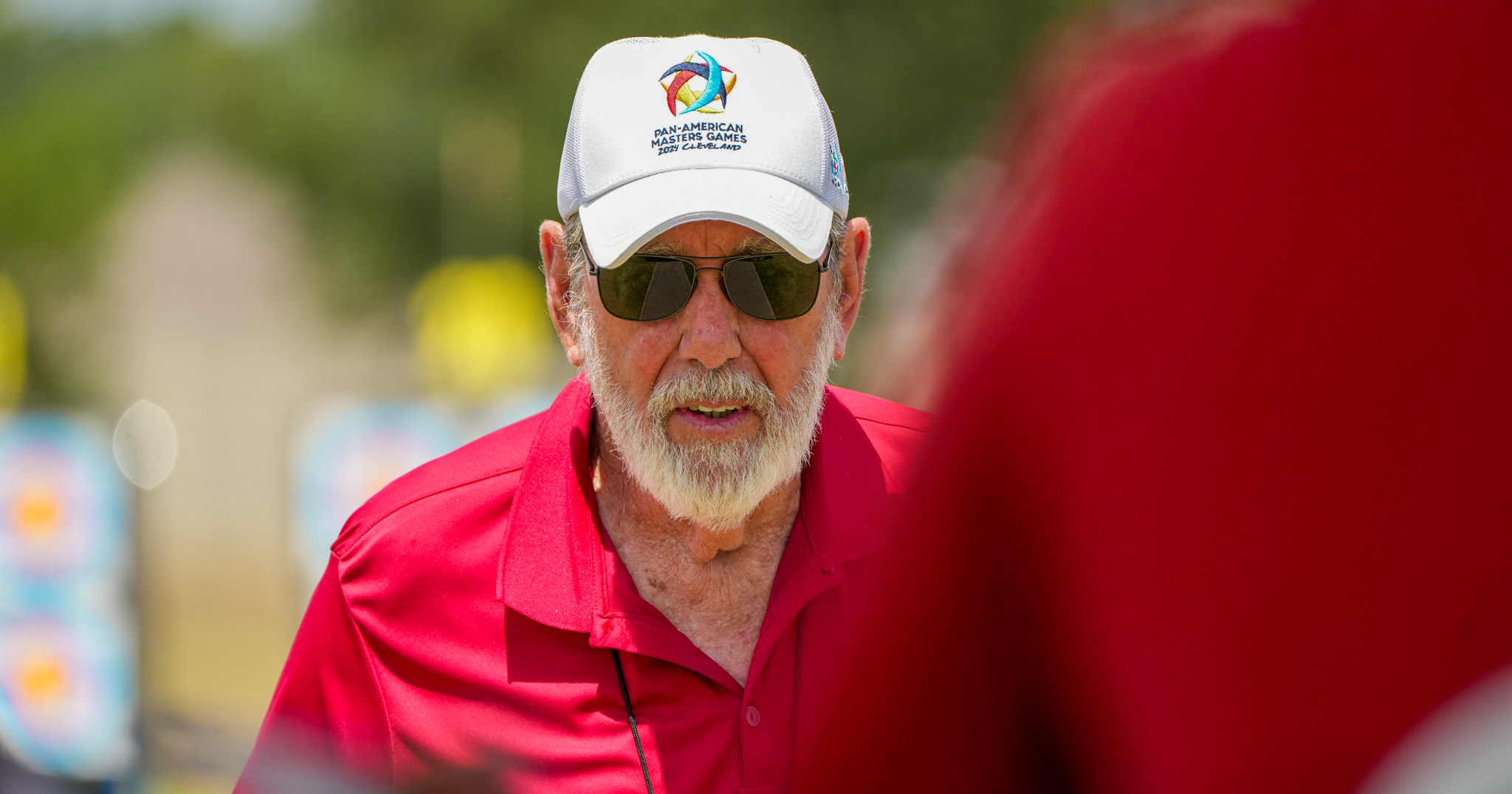
If medals were handed out for dedication and service to the sport of archery, then Terry LaBeau would have enough to hang on every target bale he has ever encountered.
Terry is one of the sport’s unsung heroes and is someone who has worn many hats, whether as a competitor, a coach, a judge, field crew, announcer, a drug-testing chaperone, security, or simply someone ready, willing and able to offer that helping hand.
Born in Michigan, Terry and his family moved during World War Two to Alabama, where his grandparents owned a farm. The entire family returned to Michigan in 1947 and returned to farming.
It was as a 14-year-old that Terry took his first steps into the world of archery, as a way of avoiding the harsh Michigan winters.
“That’s how I first got into archery, trying to get in out of the cold” he recalled with a smile. “Waiting for the late bus after basketball practice, I went to stand in the doorway of the building they were using for an archery range.”
At six feet four, 82-year-old Terry is hard to miss, but neither is his passion and commitment to archery, for here is a man who has been immersed in archery for almost seven decades.
And it was his size which proved useful in getting him out of the Michigan school doorway and into the building where they were setting up for archery classes.
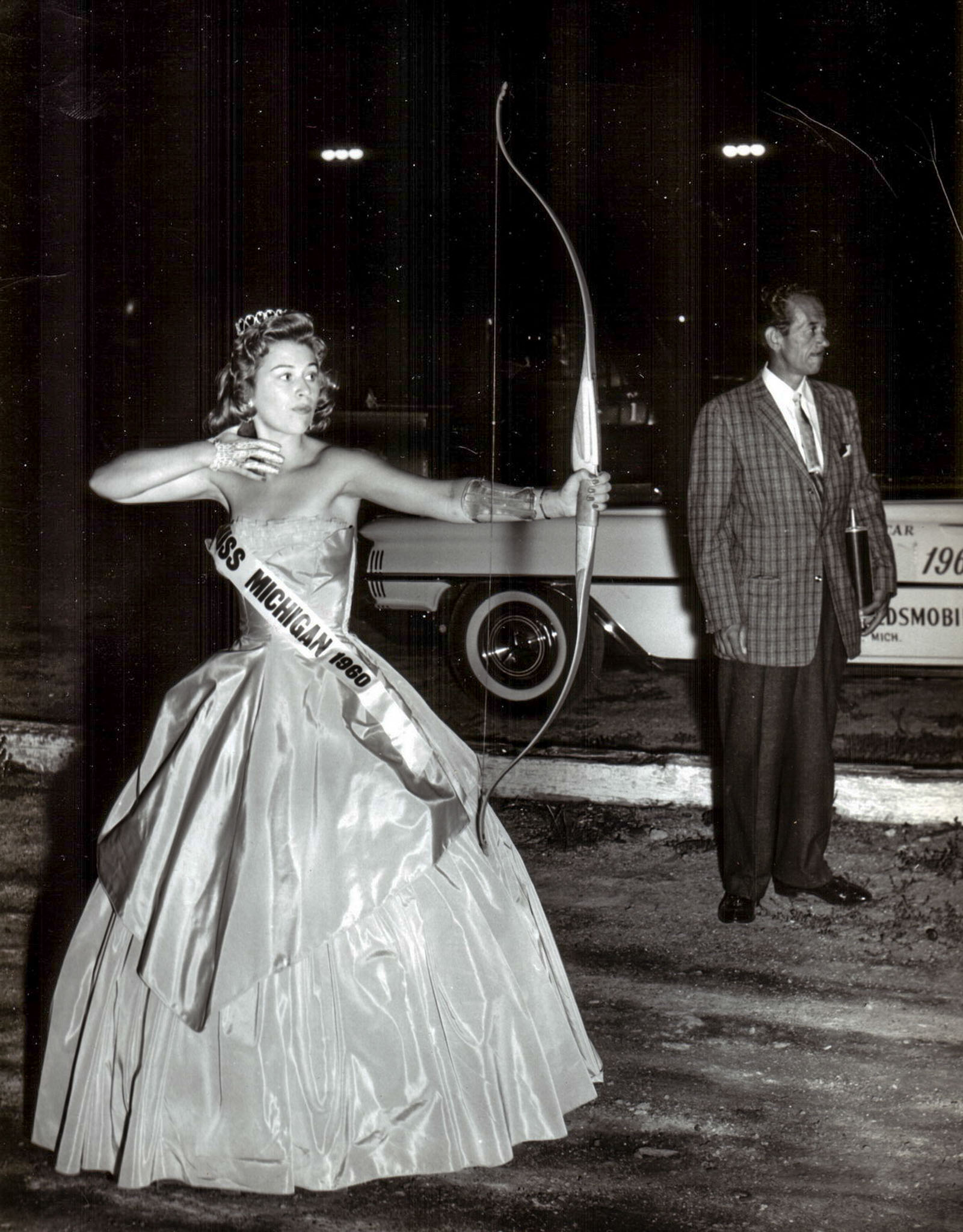
“I’d showered after practice and remember sitting on a bench along a stone wall, my wet hair frozen. I looked across the street and there was the building where they were practicing. It was right around the second week of December of 1956. I’d just turned 14 in November.”
A man called Frank Marston was leading the classes and called upon Terry to help him move target butts back and forth. Not long after, Frank placed a bow into Terry’s young hands and so began a wonderful career.
Frank Marston was the father of Ann, who was a few years ahead of Terry at Wyandotte High School and already an established archer herself. In fact, British-born Ann was the USA national champion from 1949 to 1960. She was winner of Miss Michigan, competed in the Miss America pageant, appeared on the cover of Sports Illustrated and on TV shows including The Ed Sullivan Show. A diabetes sufferer, she died aged 32, and among those attending her funeral was baseball great Joe DiMaggio.
Terry commented, “Frank built me my first bow. It was a recurve bow, but the end of the tip had broken off, where the string notch goes in to. So, he cut the other end off, whittled a couple of things in there and that’s how I started shooting.”
To listen to Terry LaBeau is to be taken on an amazing journey through the history of the sport over the last 60 years. Names which are etched into the Archery Hall of Fame are names he reels off – Ann Hoyt, Bob Rhode, 1972 Olympic champion John Williams, Ann Clark and George Gardner.
“I was really lucky,” began Terry. “In order to finance my trip to the 1959 World Championships, I had a newspaper round in a farm area in Michigan.
“They used to have a magazine called The TV Guide that I sold door to door. One of the doors I knocked on happened to be George Gardner. I explained what I was doing and why I was doing it, and he got me a new recurve bow to go to the World Championships!”
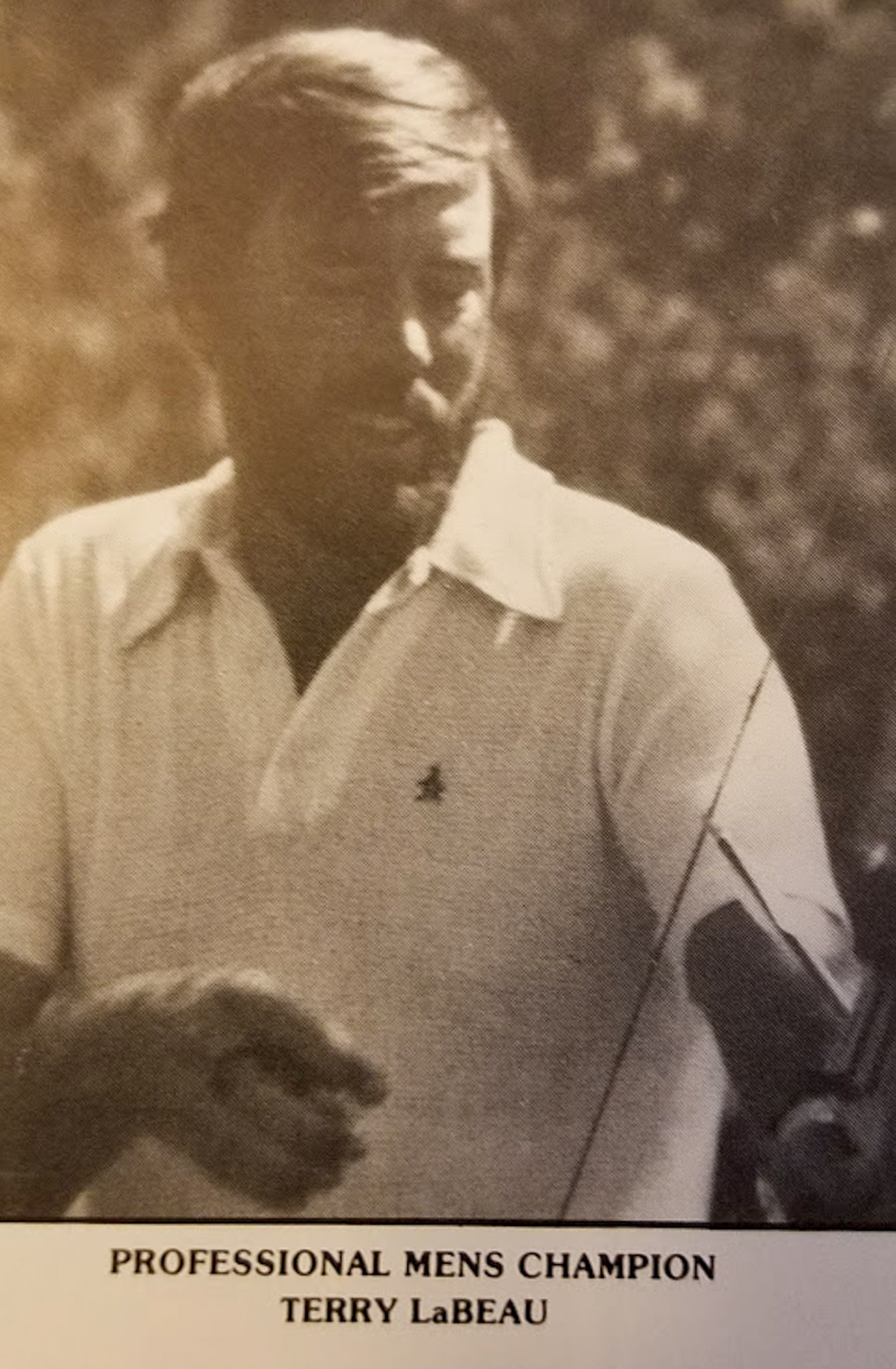
Despite catching the archery bug, Terry also excelled at basketball and swimming during his high school years. The basketball team, in particular, enjoyed a good deal of success. And it was for basketball that he received a scholarship to Northern Michigan University, though his time in college was short-lived. Within about two months, Terry had been accepted into the Naval Academy.
“I finally gave up basketball when I finished all my submarine training and went aboard a submarine,” Terry explained. “There was not much basketball or archery going on during my submarine career!”
Terry was aboard the Skipjack-class submarine, a nuclear submarine, which entered service in the late 1950s. Months would be spent submerged at sea. But, as his time at Northern Michigan University was cut short by a call to service, so too was his military career by matters closer to home.
“The Captain of the submarine knew that I grew up with my grandparents,” Terry outlined. “It was October of ’63 and I got called in by the Captain who told me that my grandfather had died, and he asked me if I wanted to go to the funeral.
“We were somewhere off of Norfolk, Va. out in the Atlantic Ocean and I told him that I wouldn’t be able to get back in time. He said, ‘we’ll get you there’.”
The Captain brought in a helicopter, which landed on the deck of the submarine, allowing Terry to reach Michigan on the day of the funeral. A conversation with his grandmother followed in which Terry expressed a desire to make a career in the Navy. But with someone needed to run the farm, Terry was discharged from the Service a few months later.
Fate would deliver another curve ball to the young Terry soon after. He said, “I was actually standing in line in Montgomery Wards buying a pair of work boots and my mother was with me and the lady next to my mother said, ‘they just shot the President’.”
The date was November 22, 1963. On returning home, Terry’s sister handed him the phone. On the other end was his Uncle Ron, who had only recently lost his father – Terry’s grandfather.
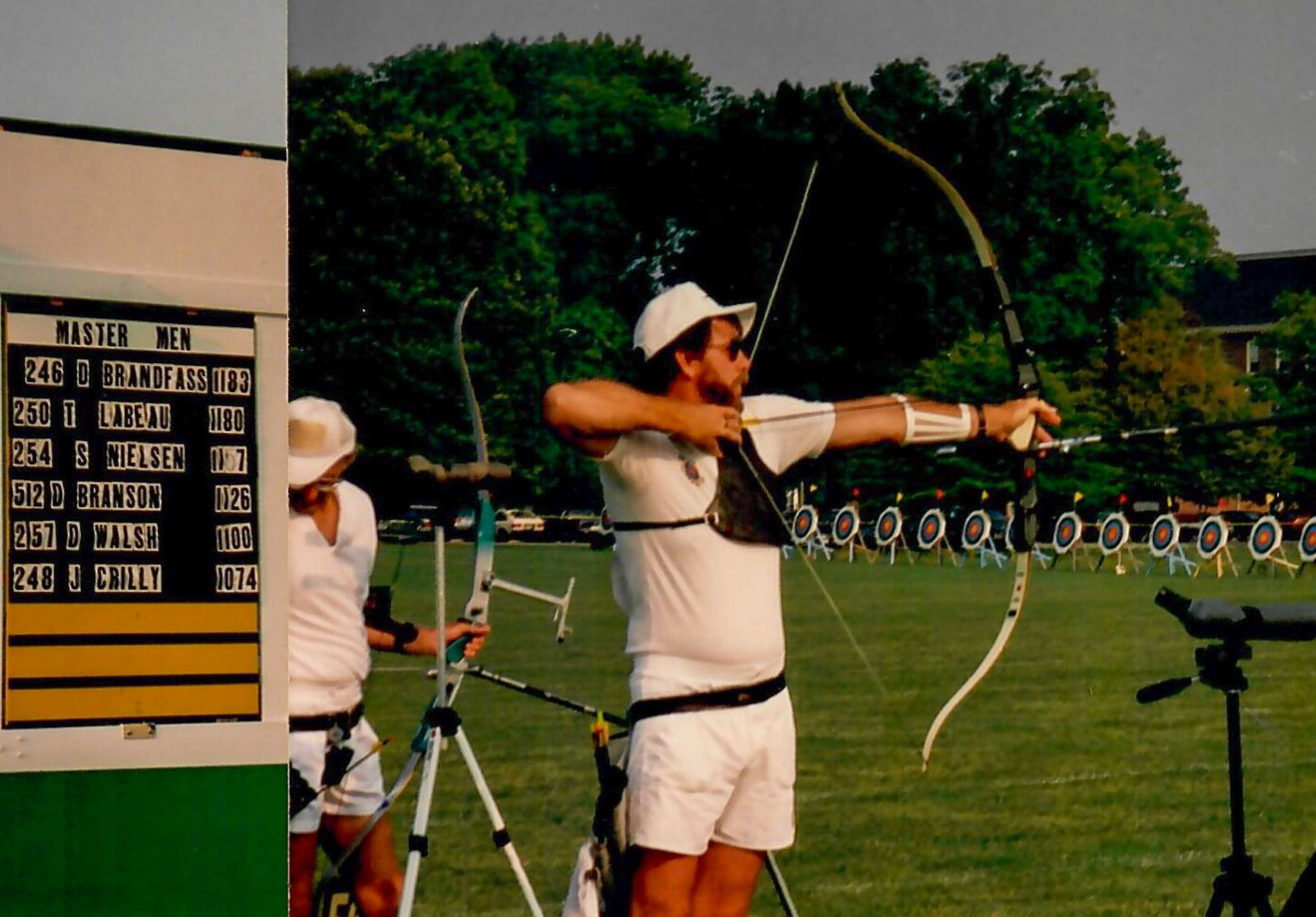
“He said, words to the effect of, ‘your grandmother just had a heart attack and died … and I’m selling the farm’.”
Within a week, Terry was at the unemployment office seeking yet another career path. Prior to joining the Navy, Terry had worked for a small telephone company and so he was sent across the street to begin 38 years at AT&T – he retired in 2001.
Not long after starting with AT&T in Michigan and Terry was sent to work in California, where he resurrected his archery passion by shooting tournaments at Golden Gate Park and immersing himself in field archery at a course across the Golden Gate Bridge.
“Ray Rogers was the top score shooter in those days,” said Terry. “In my archery career I used to pick the guy to go after, and in the early days it happened to be Ray Rogers.
“And then it got to a certain point when you’re not going after the guy, you’re going after the score. I always used to say, ‘it’s me against Mr. P’, which was the perfect score. I shot the perfect score many times indoors.”
Terry returned to Michigan in 1968, coming full circle. The archery club he attended was run by Frank Marston, whose daughter Ann had since gone blind due to diabetes.
It was a conversation with Frank Marston, during a tournament staged to raise funds for Ann’s family following her passing in 1971, which triggered Terry’s push to compete on the biggest stage of all.
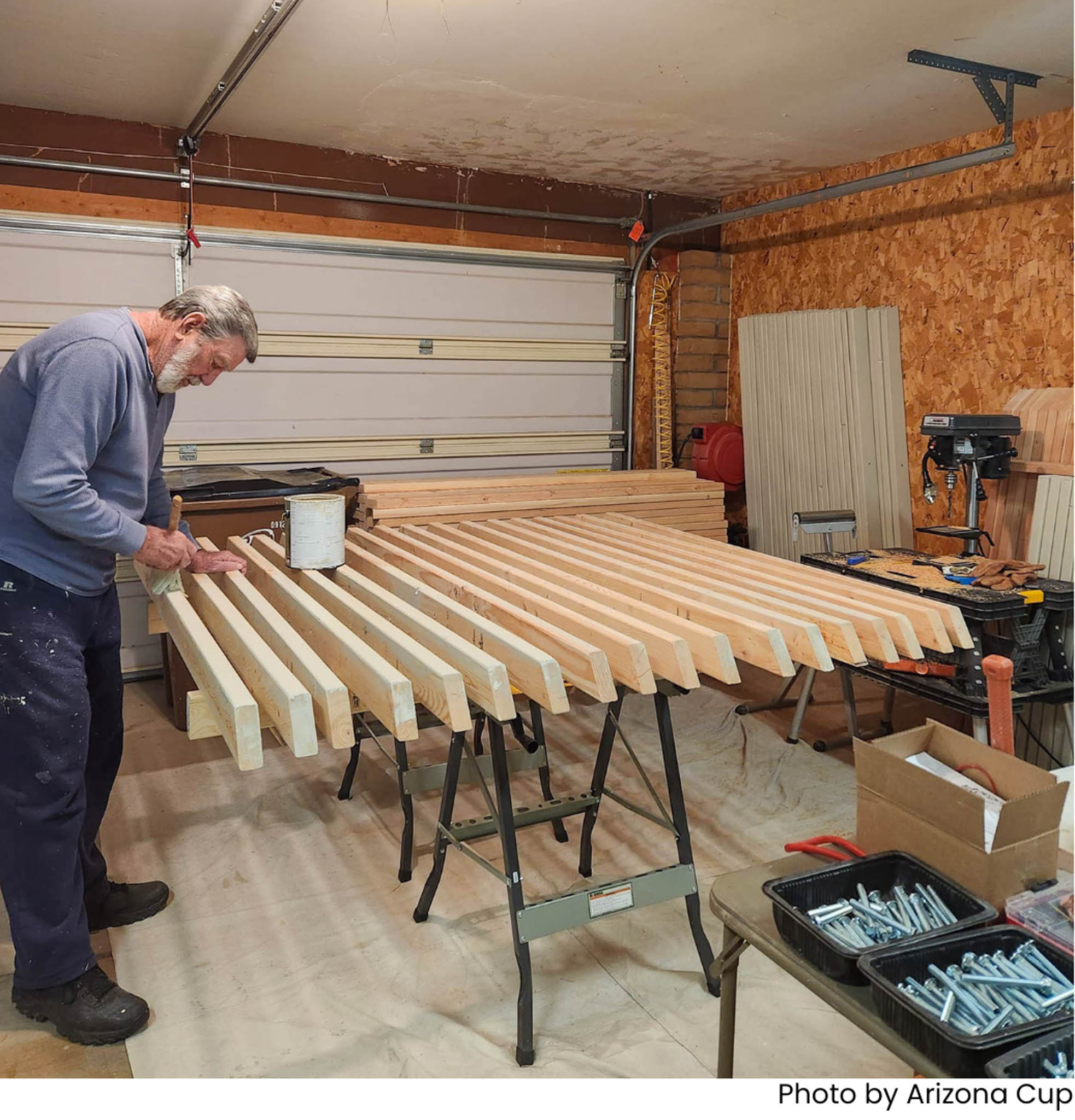
Terry took up the story, stating, “I was president of the club that was putting on this event, which began as a fundraiser and then became known as the Ann Marston Memorial. Frank came over to me to thank me and as he was walking away, he said ‘Ann really wanted to shoot in the Olympics’.
“I hadn’t even heard that archery was going to be back in the Olympics. I hadn’t been paying any attention. So, I said, ‘what do you mean, the Olympics? I didn’t know archery was in the Olympics’ and he said, ‘it is next year’.
“And so, we started this conversation … what do I have to do? He said ‘you got to mow the grass back 20 more yards and start practicing at 90 meters. And you gotta put a sight on your bow’. And that’s where my Olympic dream started right there.”
Terry’s attempt to make the 1972 Olympic team took him to Scottsdale, Ariz. for U.S. team trials. (His final attempt to make the U.S. Olympic team came in 2000). Through his job, he would move to Arizona in 1978, where he became involved with an archery club that at that time was led by Sheri Rhodes.
He was in at the beginning of the Arizona Cup in 1989, oversaw the temporary move to Tucson for the event from 1995-2001 and one of the mainstays throughout its time at the Ben Avery Shooting Facility, helping to build the original field which would host the tournament.
It was through archery that Terry would meet his wife, Diana. She was among the last of the 21 national champions he coached at Pima Community College in Tucson, Ariz.
On adjusting a known phrase to ‘beside every great man is a great woman’, we can then quite easily apply that to Terry and Diana, who celebrate their 30th wedding anniversary in September.
Both were joint recipients of the Karl E. Palmatier Award of Merit in 2022, an award first conceived 53 years ago by the Professional Archers Association ‘to recognize administrative excellence and untiring contributions to the Sport of Archery’.
It is the LaBeau’s unflinching devotion that earned them induction into the Huntsman World Senior Games Hall of Fame in 2023. Terry is also one of only three people to receive the Jane Johnson Distinguished Judge Service Award from USA Archery. He was among the decision-makers to switch up the competition format of the Olympic Games, from cumulative to elimination.
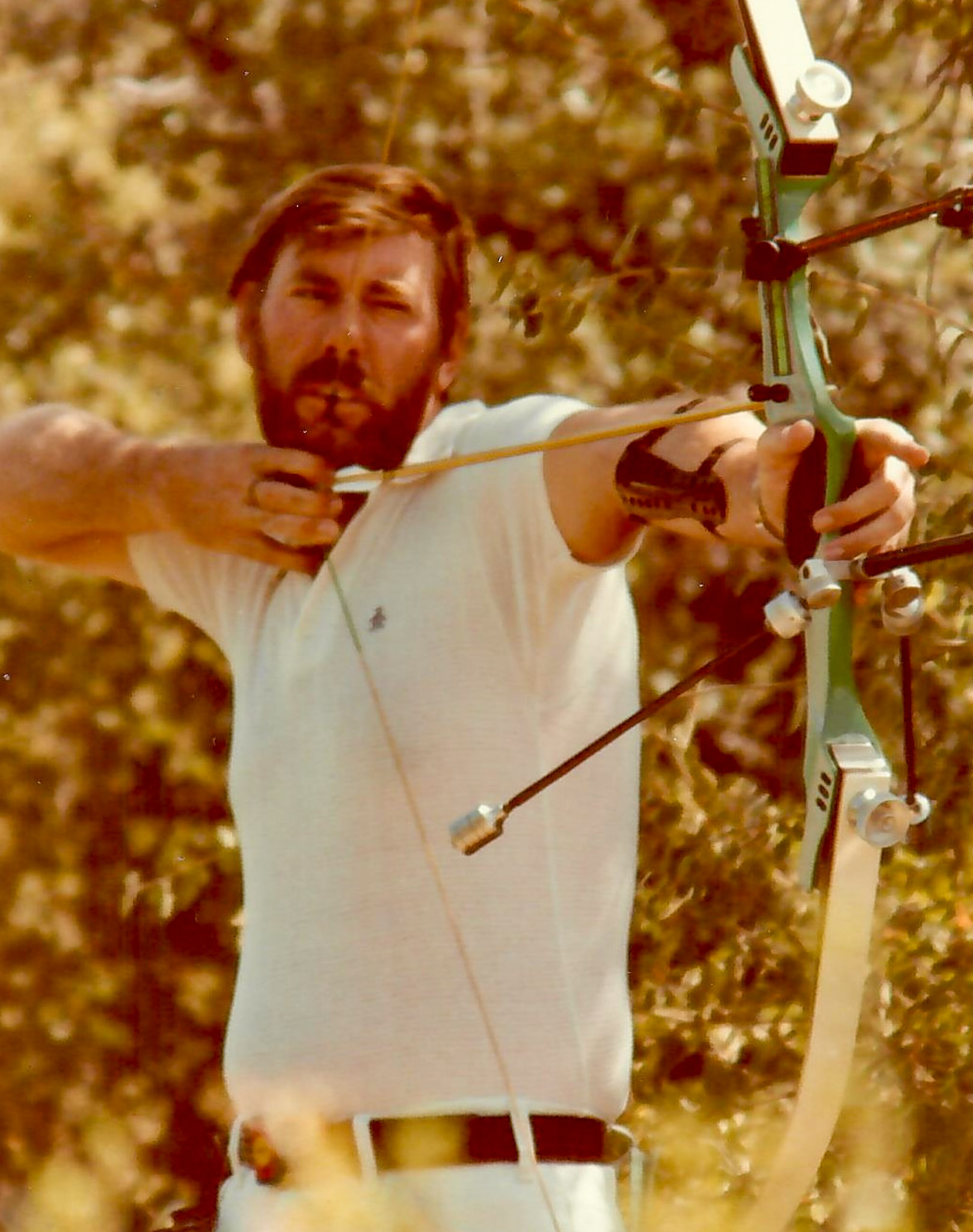
“From being that 14-year-old boy getting out of the cold, archery has given me so much more than I ever expected,” Terry said.
“I’ve won local, state and national championship. I’ve served on board of directors, been a coach, a team leader, the commissioner of national tournaments, but I think my focus when I started doing national tournaments was to give back to the sport.”
Of all the many hats worn by Terry LaBeau, the man who was National Field Champion in 1982 and 1983 admits there is still nothing that compares to the thrill of competition.
“I know I’m older now and not shooting the kind of scores, but I really do love to compete. I’ll probably continue competing as long as I can pull the bow string.”
Terry and Diana have registered to compete in the Rebel Gear Buckeye Classic, the fourth and final event in the USAT Qualifier Series, from July 25-27.
The lifetime of dedication paints a picture of a man with a keen sense of duty and loyalty. Terry LaBeau’s desire to serve his country was cut short by the needs of his family and while we salute him for the years spent in the Navy, all within archery owe Terry a debt of gratitude for the years he has spent serving the sport.
< Back to All News